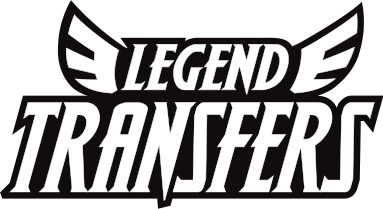This collection is empty
Continue shoppingHTV vs DTF
🔥 HTV vs DTF: Which Printing Method Is Right for You?
When comparing HTV vs DTF, it’s important to understand the differences in process, application, and results. Heat Transfer Vinyl (HTV) and Direct-to-Film (DTF) printing are two popular methods for customizing apparel. While both offer unique benefits, choosing the right technique depends on your design needs, fabric type, and production scale.
HTV vs DTF differs in how the design is applied to garments. HTV involves cutting shapes from colored vinyl sheets and heat pressing them onto fabric. DTF printing, on the other hand, uses a printed film coated with adhesive powder, then heat pressed onto fabric for detailed, vibrant designs. Understanding these differences helps businesses and hobbyists select the ideal printing method.
🔍 What Is DTF vs HTV (Heat Transfer Vinyl)?
HTV stands for Heat Transfer Vinyl, where pre-cut vinyl designs are transferred to fabric using heat and pressure. It’s widely used for sportswear, team numbers, and simple graphics. HTV is affordable, requires minimal setup, and works well for small-scale customization.
For more information about textile printing techniques, see Wikipedia – Textile Printing. This article covers the evolution of fabric printing and modern methods.
🔍 What Is DTF (Direct-to-Film) Printing?
DTF printing is a modern method where designs are printed onto a special film, coated with adhesive powder, and then heat-pressed onto fabric. This process produces durable, flexible, and highly detailed designs that work on a variety of fabrics including cotton, polyester, and blends.
DTF allows for full-color graphics, gradients, and complex designs that are difficult or impossible to achieve with HTV. It’s ideal for small to medium-scale operations and for businesses seeking consistent, high-quality results.
🌟 Benefits of HTV
-
Ease of Use – Simple cutting and pressing process
-
Cost-Effective for Small Runs – Perfect for hobbyists and small businesses
-
Durable for Simple Graphics – Long-lasting on appropriate fabrics
-
Variety of Colors and Textures – Glossy, matte, glitter, and specialty vinyl options
HTV is particularly useful for basic logos, lettering, and shapes on t-shirts, hats, and bags.
🌟 Benefits of DTF
-
Vibrant Colors – Ideal for multicolor designs and gradients
-
Durability – Resists cracking, peeling, and fading
-
Flexible Application – Works on a wide range of fabrics
-
Scalable Production – Suitable for larger batches without additional setup
By working with providers like Legend Transfers, businesses can access professional-grade DTF prints that save time and reduce waste.
👕 Durability and Quality
HTV is durable but can crack or peel on heavily washed fabrics, especially with intricate designs. DTF transfers maintain flexibility, color vibrancy, and structure even after multiple washes. The adhesive powder in DTF ensures a strong bond with the garment, providing longer-lasting results.
💰 Cost Considerations
HTV is more cost-effective for single-color or simple designs, requiring minimal equipment. DTF, while slightly more expensive upfront, saves time and materials for complex, multicolor designs. For businesses, DTF often provides better scalability and reduced long-term costs for medium to large orders.
🎨 Design Flexibility
HTV works best for simple graphics, text, and shapes. DTF allows full-color prints, photo-quality designs, and complex artwork. This flexibility makes DTF ideal for fashion brands, promotional items, and custom gifts requiring vibrant, detailed visuals.
🌍 Sustainability
Both methods have environmental considerations. HTV produces vinyl scrap waste from cutting, while DTF uses adhesive powder efficiently and reduces excess material through on-demand production. Local providers reduce transportation emissions, adding to environmental benefits.
📦 Applications
HTV:
-
Sports uniforms
-
Small-scale custom t-shirts
-
Hobbyist projects
DTF:
-
Fashion apparel collections
-
Corporate branding merchandise
-
School or club uniforms
-
Hats, tote bags, and polyester items
✅ How to Apply HTV
-
Cut the Design – Use a vinyl cutter.
-
Weed the Excess – Remove unwanted vinyl.
-
Position on Fabric – Place the design in the desired location.
-
Heat Press – Apply the correct temperature and pressure.
-
Peel Carrier Sheet – Reveal your design.
✅ How to Apply DTF
-
Prepare the Fabric – Ensure it’s clean and smooth.
-
Position the Film – Align the printed film on the garment.
-
Heat Press – Apply correct temperature and pressure.
-
Peel Film – Remove the film to reveal the finished design.
🚀 Conclusion
Choosing between HTV vs DTF depends on your design complexity, fabric type, and production needs. HTV is perfect for simple, single-color designs on small runs. DTF excels for multicolor, detailed, and scalable projects.
Working with professional providers like Legend Transfers ensures high-quality results, whether you use HTV vs DTF. Understanding the differences allows businesses and creators to choose the best method, achieving vibrant, durable, and professional apparel every time.






